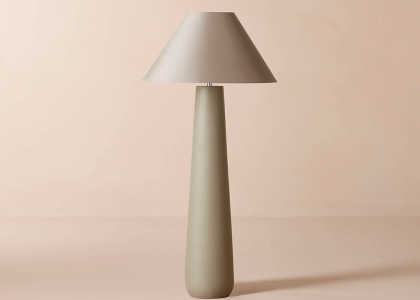Ceramic art table lamps are not merely functional lighting fixtures; they are exquisite pieces of art that can transform the ambiance of any room. The beauty of these lamps lies in their intricate designs, vibrant colors, and the unique textures that ceramics can offer. Each lamp is often handcrafted, which means that no two pieces are exactly alike.
This individuality adds a personal touch to home decor, allowing homeowners to express their style and taste through the selection of their lighting. The interplay of light and shadow created by the ceramic surface can enhance the aesthetic appeal of a space, casting beautiful patterns that dance across walls and ceilings. Moreover, ceramic art table lamps can serve as focal points in a room, drawing the eye and sparking conversation.
The craftsmanship involved in creating these lamps often reflects cultural heritage and artistic traditions, making them not just decorative items but also storytelling pieces. From traditional motifs to contemporary designs, ceramic lamps can embody a wide range of artistic expressions. Their ability to blend seamlessly with various decor styles—from rustic to modern—makes them a versatile choice for any home.
The warmth of the ceramic material combined with the soft glow of light creates an inviting atmosphere, making these lamps a cherished addition to living spaces.
Incorporating Ceramic Art Table Lamps into Your Home Decor
Incorporating ceramic art table lamps into your home decor can elevate the overall design and create a cohesive look throughout your space. One effective way to achieve this is by using lamps as part of a curated vignette on side tables or shelves. By grouping your ceramic lamp with complementary items—such as books, plants, or decorative objects—you can create an inviting display that showcases your personal style.
This approach not only highlights the beauty of the lamp but also adds depth and interest to your decor. Another way to integrate ceramic art table lamps is by considering their placement within the room. Positioning lamps strategically can enhance both functionality and aesthetics.
For example, placing a ceramic lamp on a bedside table provides practical lighting for reading while adding a touch of elegance to the bedroom. In living areas, using multiple lamps at varying heights can create layers of light that contribute to a warm and welcoming atmosphere. Additionally, consider using ceramic lamps in unexpected places, such as on a kitchen counter or in a hallway, to add character and charm to every corner of your home.
The Versatility of Ceramic Art Table Lamps
Ceramic art table lamps Sevildesigns are incredibly versatile, making them suitable for various settings and styles. Their adaptability allows them to fit seamlessly into different rooms, from living rooms and bedrooms to offices and entryways. The wide range of designs available means that there is likely a ceramic lamp that aligns perfectly with your aesthetic preferences, whether you lean towards bohemian chic, minimalist modernism, or classic elegance.
This versatility extends beyond design; ceramic lamps can also accommodate different lighting needs, from soft ambient light to focused task lighting. Furthermore, ceramic art table lamps can be easily updated or repurposed as trends change or personal tastes evolve. For instance, swapping out lampshades or changing the bulb type can dramatically alter the look and feel of a space without requiring significant investment or effort.
This adaptability makes ceramic lamps not only a long-term investment but also an exciting opportunity for creative expression within your home decor. Whether you choose to display them as standalone pieces or incorporate them into larger design schemes, their versatility ensures they will remain relevant and stylish for years to come.
How to Care for and Maintain Your Ceramic Art Table Lamp
Caring for and maintaining your ceramic art table lamp is essential to ensure its longevity and continued beauty. Regular cleaning is crucial; dust and dirt can accumulate on the surface over time, dulling its luster. To clean your lamp, use a soft cloth or microfiber duster to gently wipe away dust.
For more stubborn stains or grime, a damp cloth with mild soap can be used—just be sure to avoid harsh chemicals that could damage the finish. It’s also important to check for any signs of wear or damage periodically; addressing issues early can prevent more significant problems down the line. In addition to regular cleaning, proper handling is vital when moving or adjusting your ceramic lamp.
Given their often delicate nature, it’s best to lift them by their base rather than by the shade or neck to avoid any accidental breakage. If your lamp has intricate details or embellishments, take extra care when cleaning around those areas to prevent chipping or scratching. Finally, consider the environment in which your lamp is placed; avoiding direct sunlight can help prevent fading of colors over time, while keeping it away from high-traffic areas can reduce the risk of accidental knocks or falls.
The History and Artistry of Ceramic Art Table Lamps
The history of ceramic art table lamps is rich and varied, reflecting centuries of artistic evolution across cultures worldwide. Ceramics have been used for thousands of years for both functional and decorative purposes, with early examples dating back to ancient civilizations such as Mesopotamia and China. The artistry involved in creating ceramic lamps has evolved significantly over time; artisans have experimented with different techniques, glazes, and firing methods to produce unique pieces that showcase their skills and cultural heritage.
Today’s ceramic lamps often draw inspiration from these historical practices while incorporating modern design elements. The artistry behind ceramic table lamps is not just about aesthetics; it also involves a deep understanding of materials and techniques. Potters and ceramicists must master various methods such as wheel-throwing, hand-building, glazing, and firing to create functional yet beautiful pieces.
Each step in this process contributes to the final product’s character and quality. Many contemporary artists continue to push boundaries by experimenting with form and function, resulting in innovative designs that challenge traditional notions of what a lamp can be. This blend of history and modernity makes ceramic art table lamps not only functional objects but also significant works of art that tell stories through their craftsmanship.
DIY Ceramic Art Table Lamp Projects
For those who enjoy hands-on creativity, embarking on DIY ceramic art table lamp projects can be an exciting endeavor. Creating your own lamp allows you to personalize every aspect—from shape and color to texture—ensuring that it perfectly fits your style and space. Beginners might start with simple projects using air-dry clay or pre-made ceramic bases that can be painted or glazed according to personal preference.
There are numerous online tutorials available that guide you through the process step-by-step, making it accessible even for those without prior experience in ceramics. More advanced DIY enthusiasts may choose to explore traditional pottery techniques such as wheel-throwing or hand-building with stoneware clay. These methods require more skill but offer greater creative freedom in designing unique shapes and forms for your lamp base.
Once you’ve crafted your base, you can pair it with various lampshades—whether fabric, paper, or even handmade options—to complete your creation. Not only does this project allow for artistic expression, but it also results in a one-of-a-kind piece that adds character and charm to your home decor.
Where to Find Unique Ceramic Art Table Lamps
Finding unique ceramic art table lamps can be an enjoyable treasure hunt for those looking to enhance their home decor with distinctive pieces. Local artisan markets and craft fairs often feature handmade ceramics from talented artists who pour their creativity into each piece they create. These venues provide an opportunity not only to purchase one-of-a-kind lamps but also to connect with the artists themselves and learn about their inspiration and techniques.
In addition to local markets, online platforms such as Etsy offer a vast array of unique ceramic art table lamps from independent creators around the world. Shopping online allows you to explore diverse styles and price ranges from the comfort of your home while supporting small businesses and artisans. Antique shops and vintage stores are also excellent places to discover unique finds; many vintage lamps come with rich histories that add character to their aesthetic appeal.
Whether you choose to shop locally or online, the quest for unique ceramic art table lamps can lead you to beautiful pieces that reflect your personal style while enhancing your living space.











